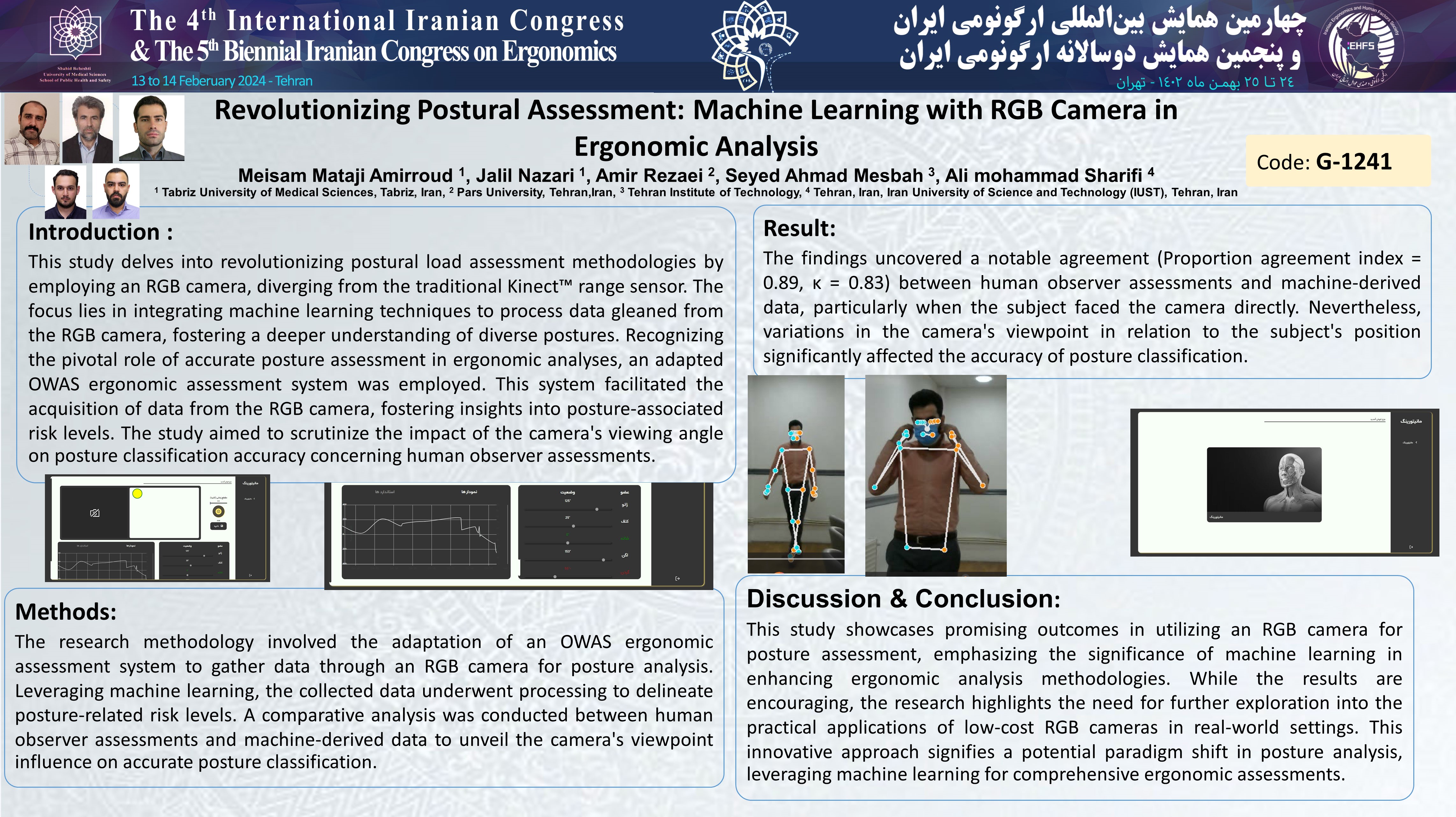Revolutionizing Postural Assessment: Machine Learning with RGB Camera in Ergonomic Analysis
Code: G-1241
Authors: Meisam Mataji Amirroud © ℗, Jalil Nazari, Amir Rezaei, ُSeyed Ahmad Mesbah, Ali Mohammad Sharifi
Schedule: Not Scheduled!
Download: Download Poster
Abstract:
Introduction
This study delves into revolutionizing postural load assessment methodologies by employing an RGB camera, diverging from the traditional Kinect™ range sensor. The focus lies in integrating machine learning techniques to process data gleaned from the RGB camera, fostering a deeper understanding of diverse postures. Recognizing the pivotal role of accurate posture assessment in ergonomic analyses, an adapted OWAS ergonomic assessment system was employed. This system facilitated the acquisition of data from the RGB camera, fostering insights into posture-associated risk levels. The study aimed to scrutinize the impact of the camera's viewing angle on posture classification accuracy concerning human observer assessments.
Methods and Materials / Case Report
The research methodology involved the adaptation of an OWAS ergonomic assessment system to gather data through an RGB camera for posture analysis. Leveraging machine learning, the collected data underwent processing to delineate posture-related risk levels. A comparative analysis was conducted between human observer assessments and machine-derived data to unveil the camera's viewpoint influence on accurate posture classification.
Results
The findings uncovered a notable agreement (Proportion agreement index = 0.89, κ = 0.83) between human observer assessments and machine-derived data, particularly when the subject faced the camera directly. Nevertheless, variations in the camera's viewpoint in relation to the subject's position significantly affected the accuracy of posture classification.
Conclusion
This study showcases promising outcomes in utilizing an RGB camera for posture assessment, emphasizing the significance of machine learning in enhancing ergonomic analysis methodologies. While the results are encouraging, the research highlights the need for further exploration into the practical applications of low-cost RGB cameras in real-world settings. This innovative approach signifies a potential paradigm shift in posture analysis, leveraging machine learning for comprehensive ergonomic assessments.
Key Words
RGB camera, postural assessment, machine learning, ergonomic analysis, posture classification, viewpoint influence
Comments (0)
Post a comment
Post comment is closed by admin.
